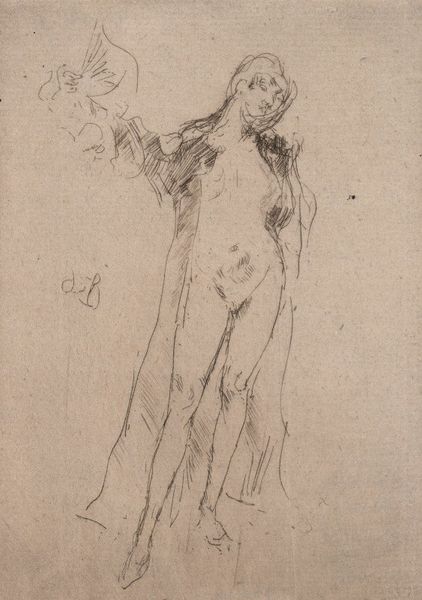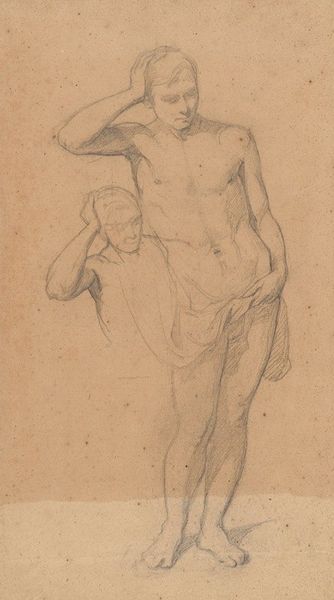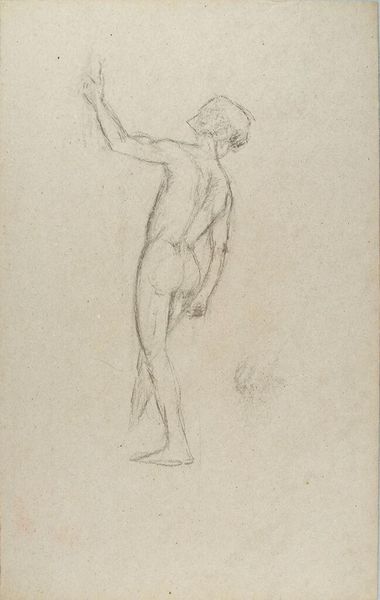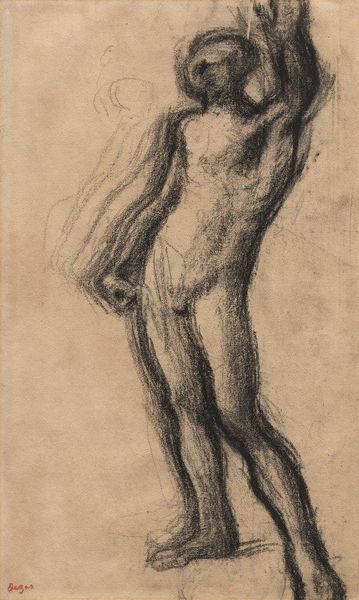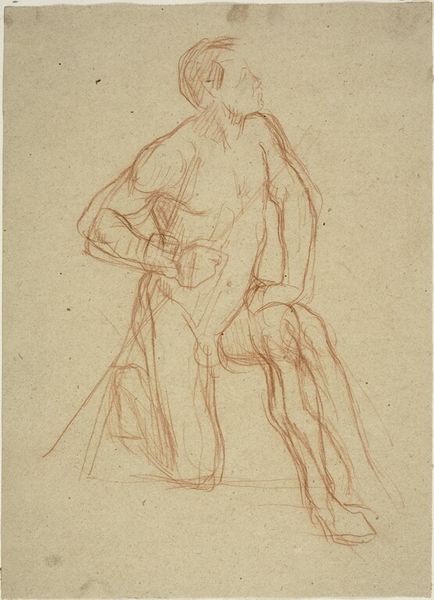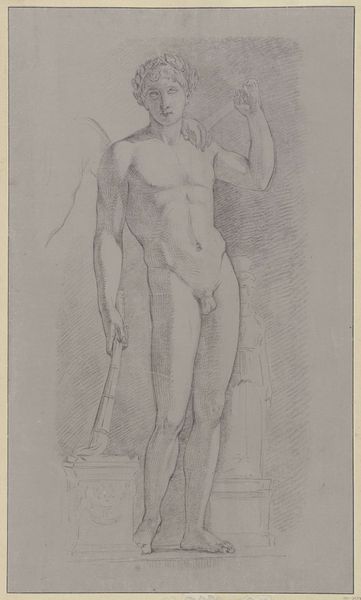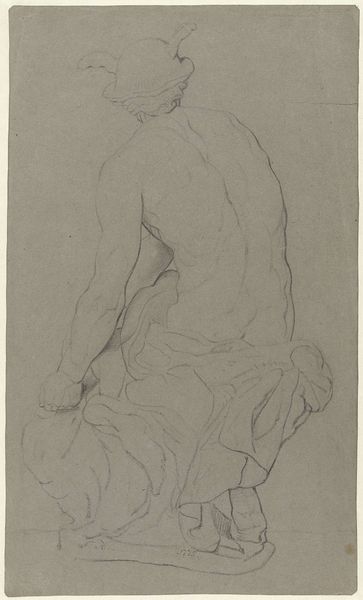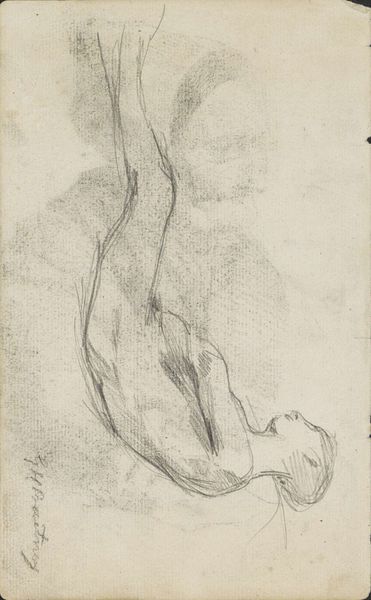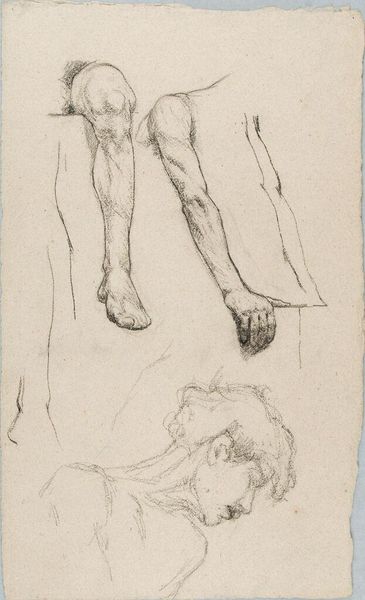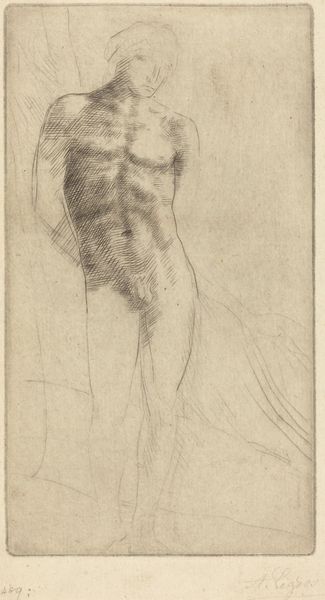
drawing, pencil
#
portrait
#
drawing
#
impressionism
#
charcoal drawing
#
figuration
#
pencil
#
human
#
portrait drawing
#
male-nude
#
realism
Copyright: Public domain
Curator: Right, so here we have Van Gogh's "Standing Male Nude" from 1887. It’s a drawing done in pencil and charcoal. Quite spare, isn't it? Editor: Absolutely, the overall tone is rather melancholic. It reminds me of a foggy morning, muted and somehow introspective. It is as though the artist had captured not just the likeness of a man but his soul. Curator: You know, he made quite a few nude studies while in Antwerp and later in Paris. It was a standard academic practice. Yet, I find this particular sketch to be surprisingly full of feeling. Look how he's slumped against something—probably a table. His pose is rather dejected, or perhaps just contemplative. It feels like it tells of the lives of ordinary folks outside art history! Editor: Precisely, I agree wholeheartedly! This drawing resonates with the historical discourse on marginalized bodies in art, specifically how male nudes have been traditionally employed in Western art, often for heroic or mythological representations. What Van Gogh’s portrayal offers is a refreshing deviation from idealized notions of masculinity. The artist here creates a compelling piece through subtle, emotive detailing—making palpable statements concerning vulnerability and empathy. Curator: It makes you think about who this model might have been, what his life was like. One can’t but question what it means to be this figure in this pose, observed, vulnerable but silent. The raw simplicity draws attention to the act of observing, and somehow implicates us in it! Editor: I see the drawing as raising concerns about visibility and representation, a point of resistance that goes beyond conventional interpretations of art and touches broader issues surrounding social justice and political awareness! Curator: It's almost a protest. A quietly drawn, unassuming rebellion. That makes me want to delve deeper into the implications of Van Gogh as a documenter. Editor: The ability of this modest study to elicit reflection concerning individual experience through form, emotion, and contextual significance makes it memorable, in my view.
Comments
No comments
Be the first to comment and join the conversation on the ultimate creative platform.

